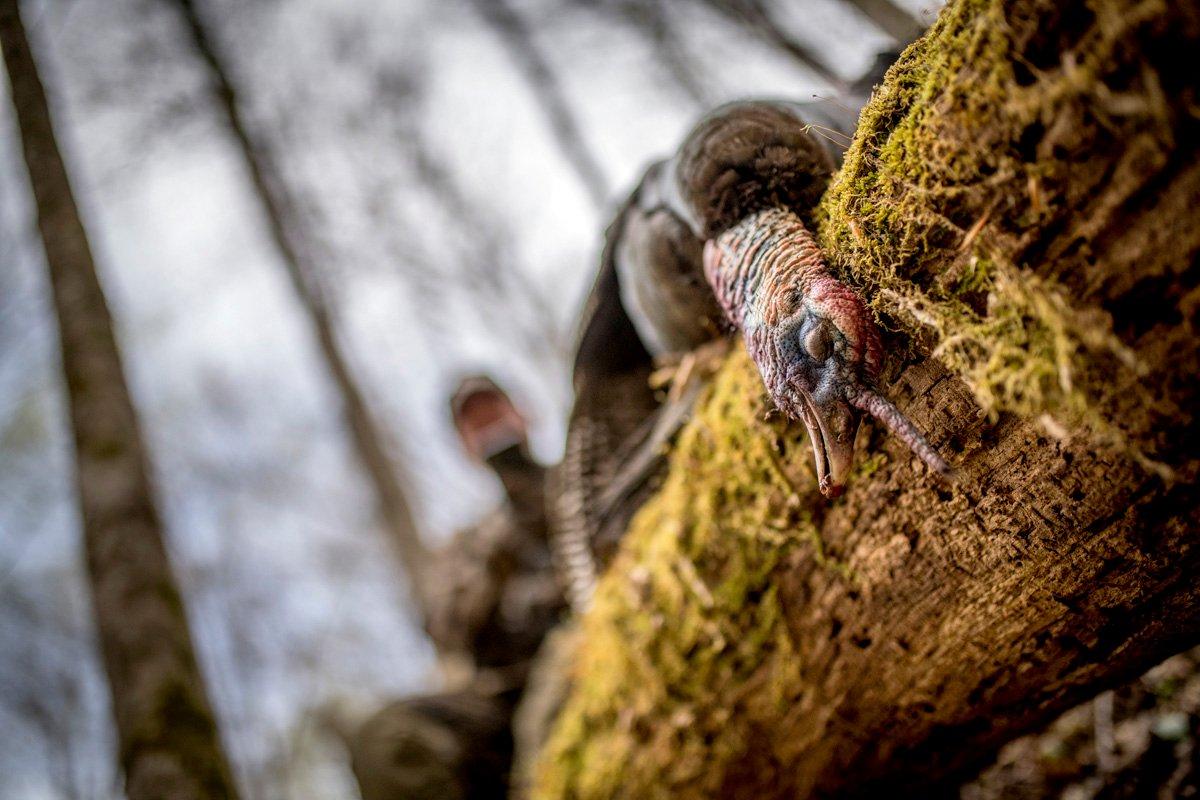You can spend a full season chasing the same bird, dreaming of long spurs and a thick beard. But the author wasn't expecting this
When a gobbler is very close, you hear things that are indistinguishable when he's farther away. In this particular gobble, I heard the deep rumble that provides the floor upon which the gobble itself is built. I heard the metallic rattle that starts near the end of the gobble and continues a fraction of a second past it. I also heard something I'd never heard before: I heard his feathers rustle against one another after he gobbled, as he settled back into his normal posture.
The source of this gobble was directly behind me, no more than 10 yards away. It was still dark, and he was still in the tree. It wasn't dark enough, though, for me to risk trying to get a little farther from him. Soon he was in full morning roar, sounding off every five to 10 seconds and throwing in a double gobble every minute or so. When he pitched down, it was directly over my head. I sat tight and watched him sail off the bench. After he was out of sight, I stood up, stretched, and reverted to Plan B.
The bird started gobbling again almost as soon as he landed. He was less than 100 yards away under the lip of the bench. I backed off, walked 250 yards to flank him and, when I thought it was safe, dropped to his level. He double-gobbled at my first call, and a few minutes later I saw him coming, far off through the open woods. He was still 150 yards away, strutting straight toward me and gobbling as he came when a hen strolled off the bench above the gobbler. She walked in front of him like he didn't exist, and continued downhill. He continued to gobble as he went downhill after her.
Time Out
It rained hard the next day and I admit to taking it off. But the third day dawned clear and still, and I was there before first light. So was the gobbler, within 50 feet of where he'd been two days before. Since he'd flown to the lower bench that first day, I used the remaining darkness to retreat, drop onto the bench below him, and close the distance until I was directly downhill and less than 75 yards away.
Naturally, he decided to lean forward and fall off his limb this morning. I didn't hear him land, but when he gobbled on the ground it was muffled because of the bench. When I was sure he was down, I hit him pretty hard with an excited, cutting yelp and he went crazy.
It was tense for a good while. He'd approach the steep lip of the bench and, 35 yards below, I would get my gun aimed at the sound of his gobbling. Then he'd retreat from the edge and I'd relax a little. This went on for more than an hour, during which time he came almost to death's door a half-dozen times. Once I even caught a glimpse of his tail fan as he strutted at the edge of the bench. But he turned around a foot too soon. I don't know what eventually bumped him, but I heard the gobbler putt several times, then heavy wingbeats, and suddenly the hunt was over. I went back two times in the next four days. One day he gobbled just three times. The other day it was so windy he didn't gobble at all.
Then I went out of state for a four-day hunt and got lucky, filling two tags in two days. I was scheduled to be somewhere immediately after that hunt, but the early tag-out left me with two free days. Turkey bums like me find that unacceptable, so I drove the 200 miles back home to give those two days to the bench-hopping gobbler.
The first morning was business as usual. He gobbled at my calls for more than an hour, hung up on the bench below me, and stayed interested but invisible until he just quit gobbling around 9 a.m. I stayed until 1 p.m. and never heard him again.
On the morning of the second bonus day - my last chance to hunt him for the year - the gobbler flew down my way and approached just under the lip of the bench. I caught tantalizing glimpses of him for more than 50 yards as he slowly approached, but at 60 yards he dropped a little more downhill. I didn't see him again until the edge of that tail fan popped over the lip at 25 yards, followed by the globe of his white noggin. I could see his head, but nothing below it, and after what seemed like 10 minutes (but couldn't have been more than three), he turned sideways and started easing back downhill. I took the shot.
He weighed 18 pounds, he had a full, beautiful tail fan and … he was a jake.
More Realtree turkey hunting.









